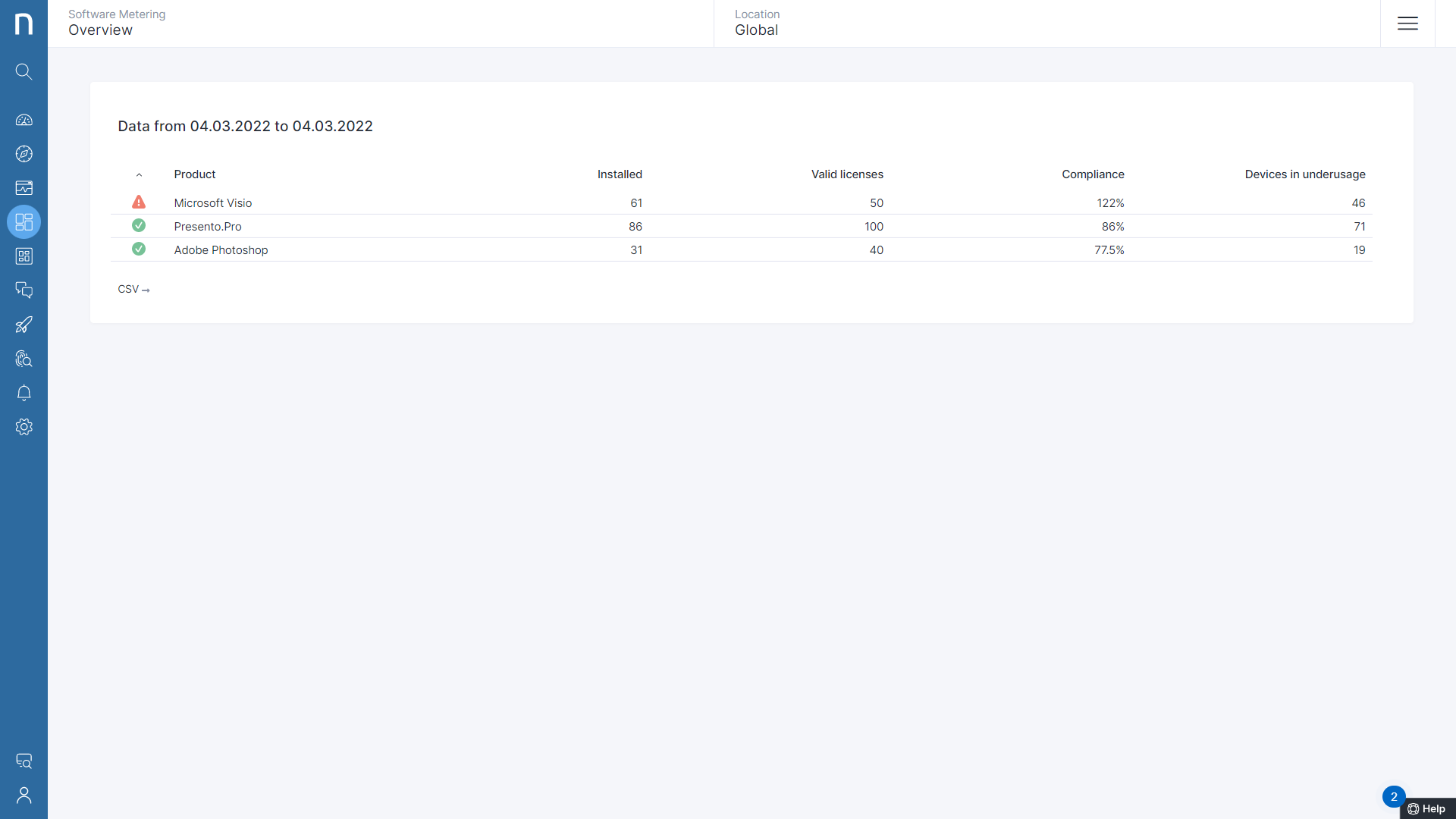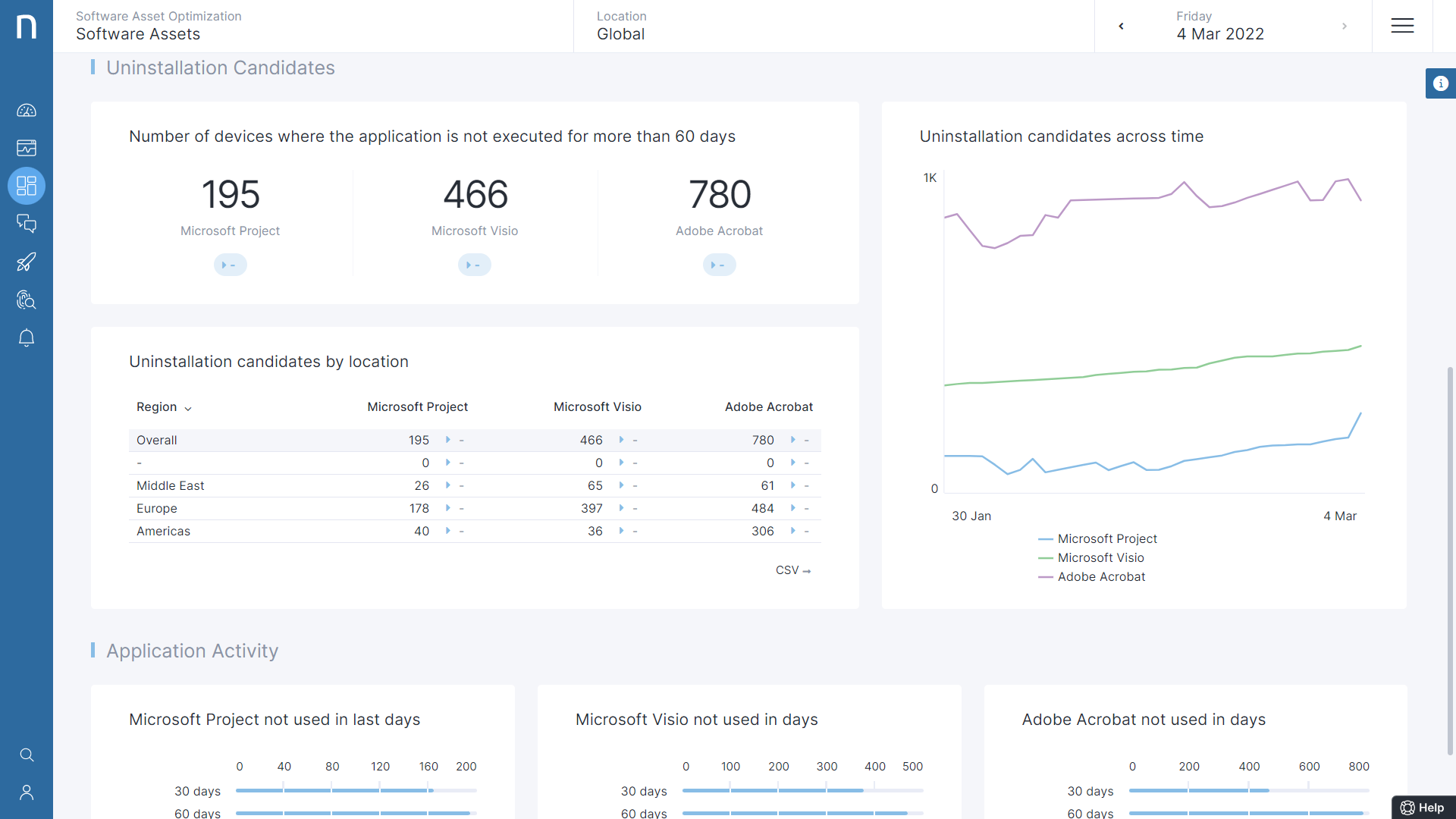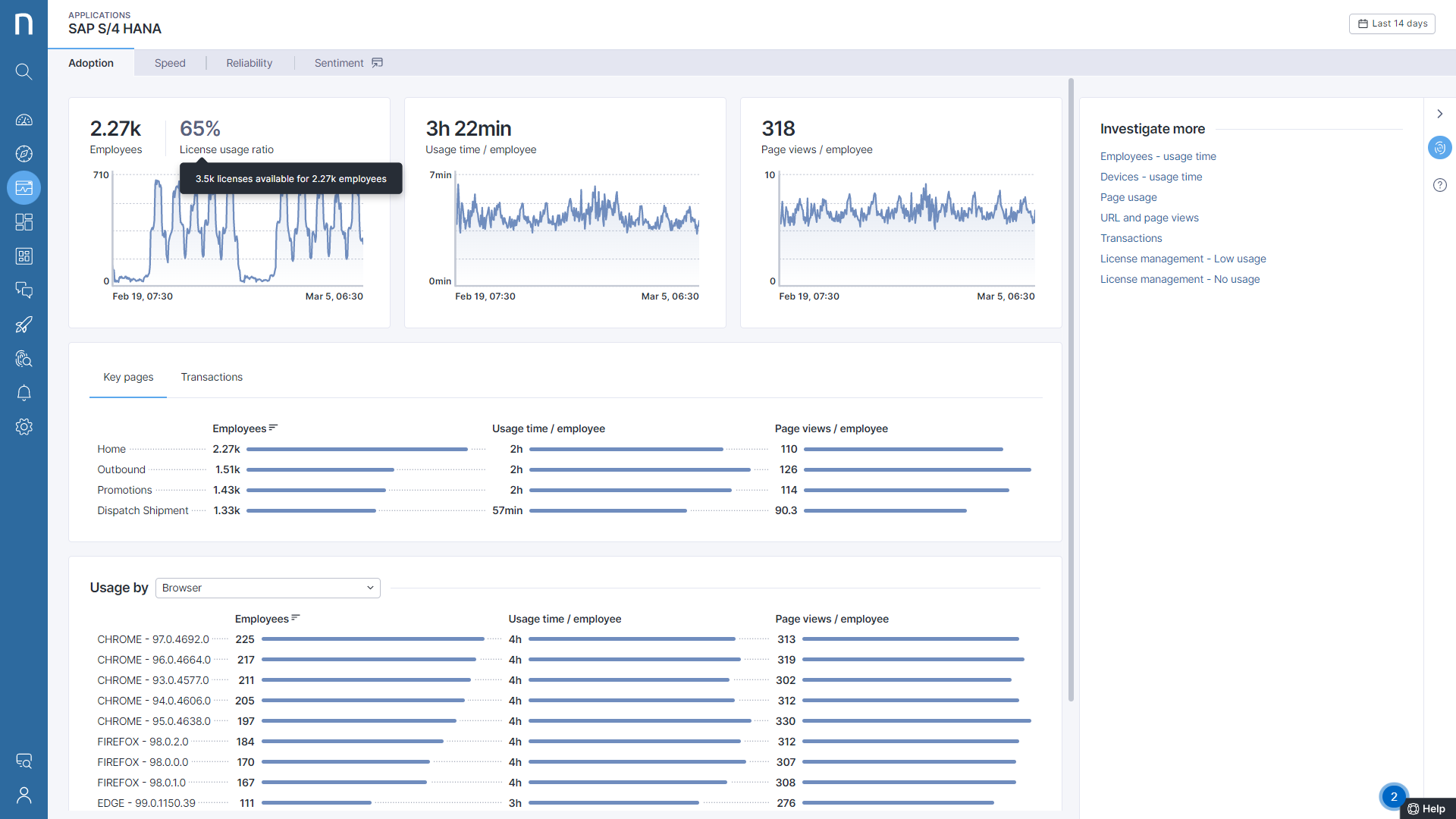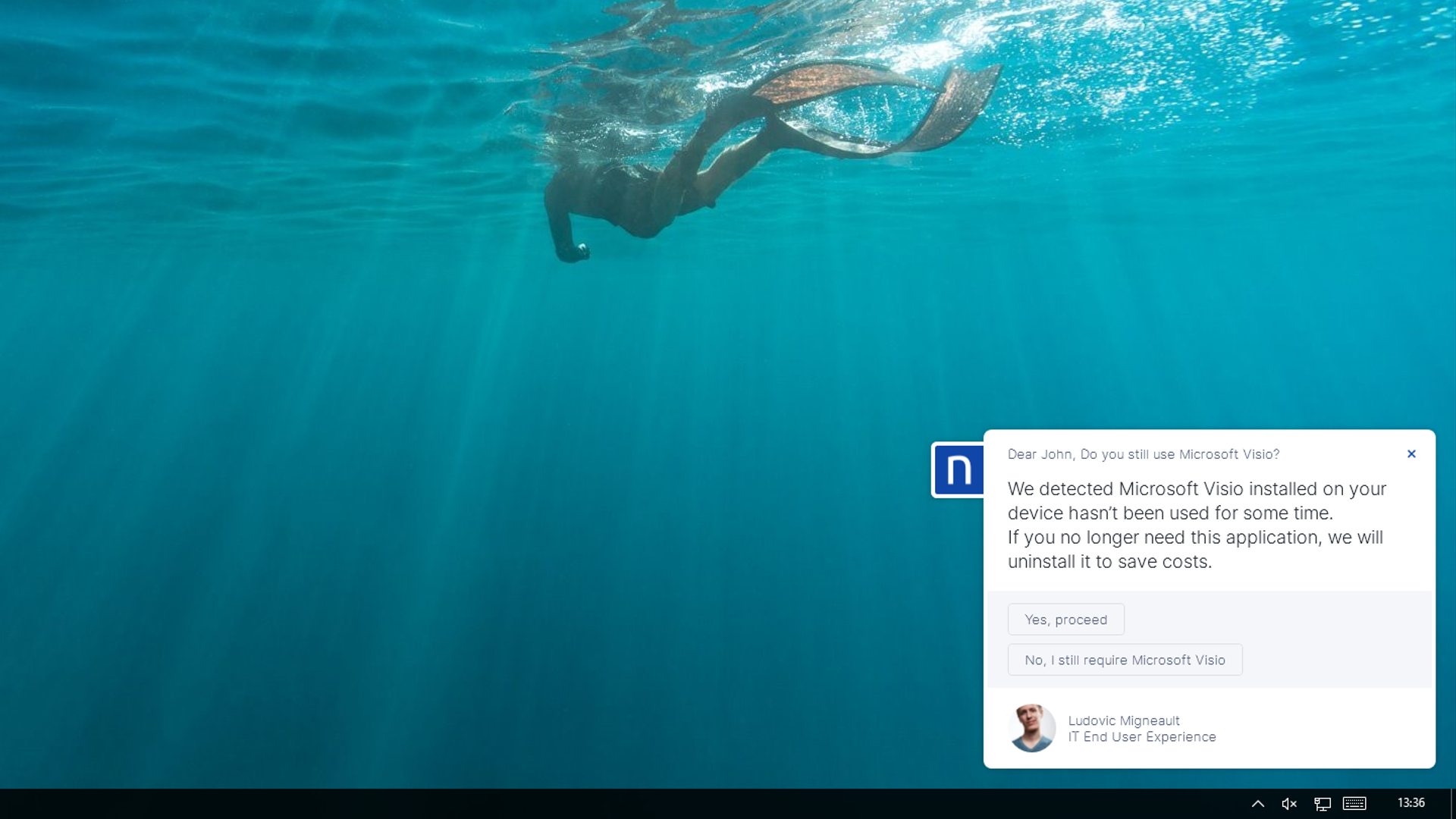Reduce Software License Cost through “Usage-Based” Application Optimization
Enterprises continue to deploy more software…and it isn’t stopping any time soon
Enterprises are looking at Software as the key differentiator to render faster services to their customers, which has led to an exponential rise in the number of Enterprise software being onboarded and deployed. The recent move to remote and hybrid working has accelerated this trend.
Currently, IT teams are managing an average of 170+ Enterprise apps in large organizations and 70+ in small and medium organizations (Okta report). Any additional deployed application can make tracking and managing software licenses difficult.
What makes application license tracking so difficult?
Even though license numbers are known at the time of purchase, budget constraints, and changes in employee needs during project implementation can lead to deviations from the initial procurement.
Also, with organizations adopting decentralized application license procurement and ownership to aid employee productivity, licenses get owned by different stakeholders across the enterprise – from IT to Finance, Product development to Customer support, and Marketing to HR, IT teams have the challenge to justify why it is hard to track software licenses, let alone optimize or manage.
The MAIN Problem
Thus, the lack of insight into application usage and the number of application licenses being actively consumed is the main cause of enterprises incurring unnecessary costs on unused and redundant software. This bloats the annual software procurement and management budgets.
To solve this problem, IT must find a way to optimize licensing costs, and create a more cost-efficient software license plan, without affecting employee productivity and digital experience.
Why Counting Software Licenses is not sufficient!
A good starting point for undertaking Application License Optimization or Application Rationalization is an audit to gain insights into Application license count, ownership, need, and utilization.
Traditionally, it is either done manually, utilizing software and asset management tools, or by relying on vendor-provided information (like in the case of SaaS apps).
Manually tracking license counts across siloed IT teams and business owners can quickly get messy, Software and Asset Management tools run into accuracy issues due to information gaps arising from changes to employee needs and usage, while not all software vendors have the necessary information required for an audit.
But one common disadvantage with all three approaches is that they provide only license count (whether accurate or not) and do not provide any insights into need and actual application utilization. Performing Optimization just based on license count is a major risk to productivity and may lead to employees’ frustration.
Utilization-based Software License Cost Optimization
This is where Nexthink can help to make the solution simple.
With the ability to discover all aspects of the software in the enterprise, like utilization by user, time of utilization, usage pattern, parallel licensing, etc. IT Teams can immediately:
- Discover and Meter the software utilization
- Reduce under/unutilized licenses
- Re-Allocate the recovered licenses to users requiring the application.
Let us understand Utilization-based Software License Cost Optimization using Nexthink.
Discover and Meter software utilization
Nexthink detects and categorizes every single application, (both desktop and web) used by Employees across the organization, making it the ideal starting point to take stock of the utilization of the entire inventory of applications.
The utilization data powers a vast set of intuitive dashboards, which provide instant visibility into, the most used apps and highlight the issue of unauthorized apps, or redundant software, And tell us if re unused and forgotten licenses are silently accumulating costs for the business.
Nexthink provides 3 specific modules and visualizations to better manage and meter software licenses and utilization:
1. Software Metering Dashboards:
The module helps to monitor license compliance for desktop applications by measuring their real utilization. It compares the actual application installations on devices across the enterprise with the number of purchased licenses to either save license costs for applications that are rarely used or increase the budget to purchase additional licenses for applications that are frequently used.
This module also provides insights into Devices where the licensed applications were underutilized against a given threshold, thereby providing an opportunity to revoke licenses from users who no longer need the application.

2. Custom Dashboards and Library Pack
Nexthink provides the option to configure custom dashboards to help monitor and track application utilization and license usage based on custom criteria defined on the vast set of utilization data collected by Nexthink.

Alternately, Nexthink also provides access to ready-to-use content packs like Software Asset Optimization, which allows IT Administrators to detect unused copies of applications like Microsoft Visio, Project, and Adobe Acrobat DC licenses across all devices in the corporate network and uninstall them, when appropriate, to realize significant cost savings.
The dashboards in the pack allow IT administrators to enhance their Software license optimization decision-making by tracking devices that have Microsoft Visio, Project, and Adobe Acrobat DC installed and when they were last used.

3. Application Experience Adoption Dashboard (Specific to SaaS Application):
The Application Experience Adoption Dashboard allows IT to not only track the deployment and utilization of business-critical SaaS applications, but also to track the license usage ratio in order to help identify cost optimization opportunities and highlight compliance issues.
Using Quick drill-downs on the dashboard, IT Administrators can instantly retrieve the list of users who have been provisioned a license but have either used the application sparingly or not used it at all.

Success Story: Nexthink helps a Healthcare Multinational Save $1.8M on SaaS Licensing
Reduce under/unutilized licenses
Powered by precise Application utilization insights, IT Administrators can take actions at scale like uninstalling unused and underused applications to realize immediate cost savings.
When IT teams are unsure about the impact of application uninstallation or access revocation, automated Nexthink Engage campaigns could be utilized to gather user feedback and consent.

For example, the Software Asset Optimization pack contains pre-configured Remote Actions and Engage Campaigns to automatically remove the applications from the devices that are not making active use of them to immediately realize cost savings by freeing up the licenses.
Re-Allocate the recovered licenses
The recovered licenses could then be allocated to users who require access to the application.
Nexthink remote action “Start Application or Task Sequence” could be leveraged to automatically initiate application installation in case of desktop applications and Engage Campaigns could be leveraged to intimate users about application access allocation.
Reduce Software License Costs without impacting productivity
By leveraging Nexthink, IT is empowered with the required information to proactively identify and perform appropriate actions to maintain an optimal number of application licenses required to aid employee productivity, all while saving costs for the organization.
Additionally, by correlating application license information with utilization data, there will be no future impact on Employee Productivity and Service Requests.
Success Story: How Visibility into Usage Data Fast Tracks Your Software License Optimization
Looking to implement smart Utilization-based Software License Optimization? Contact Us
Related posts:
- How Usage Data Fast Tracks Your Software License Optimization
- Cleaning House – How One IT Team Saved $1.8M on SaaS Licensing
- How to Reduce IT Costs without Increasing Incidents or Escalations
- Driving Cost-Efficient Transformations Without Impacting Quality